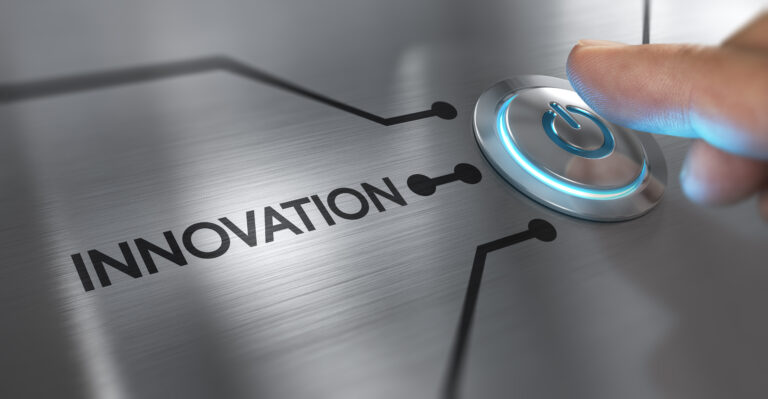The media and boat-show organizers have been quick to spotlight trends such as electrification, sustainability and foiling designs as the future of recreational boating. However, top naval architects and designers drawing up the next generation of pleasure craft say boatbuilders and clients are mostly asking them for simpler approaches and smaller changes — many of which don’t involve these trends at all.
Soundings Trade Only talked with three domestic firms that have drafted boats for clients including Hinckley, Valhalla, Cruisers and Cobalt, as well as America’s Cup teams and private clients. They say they see electric propulsion, foiling and recyclable materials as concepts with strong potential, but they’re not currently getting many requests for radical design elements or engine packages. Instead, they say, builders and clients are asking them to focus on many of the same elements that have always been the focus of boat design.
“If we’re going to do something environmentally better, it’s not to build a boat out of hemp,” Gino Morelli, co-founder and president at Morrelli & Melvin in Newport Beach, Calif. “It’s to design a more efficient boat.”

Requests from boatbuilders are more likely to focus on popular design elements, says Michael Peters, who owns Michael Peters Yacht Design in Sarasota, Fla. As one example, Groupe Beneteau recently asked him to create a Wellcraft model with a vertical or axe-style bow to mimic popular competitors. Peters didn’t like the idea of a vertical bow in a high-speed boat because of the potential negative handling issues it can create in a following sea. Still, he designed the bottom for the Wellcraft 355 and 435, helping the builder to achieve the type of change it wanted.
“It’s a bit of a monkey-see, monkey-do industry, and it’s hard as a designer to go along because a lot of this stuff offends you from a personal point of view,” Peters says. “You have to sit there and say, ‘If that it is what the game is, am I ready to sit on the bench?’”
Patrizio Facheris, who worked for Peters for 13 years before starting Facheris Design, also in Sarasota, says a common challenge is that even if a boatbuilder wants to try something new, such as electrification, the end user often wants something else. “I have no problem with new technology, but simple systems for a [fold-out] beach platform need to be hydraulic,” Facheris says. “A real captain will ask for hydraulics. They don’t want anything electric on the boat.”

Real World Perspective
Peters has been in the business for more than four decades. He designed some of the most successful boats in offshore powerboat racing’s elite Class 1, and it wasn’t that long ago that his firm’s designs were called “futuristic.”
He recalled speaking to students at The Landing School in Arundel, Maine, and giving them a reality check. “You don’t get to choose your assignment,” he told them. “If you want to stay active and part of the industry, you have to eventually do what the industry is asking you do to.”
The Wellcraft 355 and 435 are a good example of this kind of compromise.
While Peters has been designing professionally since 1981, he says half of his staff is younger than 25. “There are changes in technology that we have to keep up with, and they often come in with those guys,” he says. “The trends are constantly changing.”
If he was advising young designers, he says, he would tell them to look at electric power, foils and multihull designs. “It won’t happen in my lifetime, but for someone in school, you better be looking at it,” Peters says. “I look at the stuff that’s going on now, and I’m thinking I’m lucky where I’m at the stage of my career where I don’t have to embrace that stuff because I don’t like it.”

For example, Swedish builder Candela Yachts has been grabbing headlines with its electric foiling boats, recently quelling concerns about range when one ran more than 420 nautical miles during a 24-hour stint that included fast recharging with a Polestar automotive charger. “I admire what Candela is doing, but at the end of the day, it flunks on practicality levels,” Peters says.
His firm also designs superyacht tenders for Maine-based Hodgdon Yachts, which is looking at electrifying one. “If you happen to own a 400-foot yacht, that could be the mother ship and charge it,” Peters says. Of electric boats, in general, he says, “Even if they manage to get range better than it looks right now, you’re tethered to a charging station. You don’t have a mobile fuel source, and the fuel source you’re carrying is too heavy.”
Builders like Sunreef, which introduced the 80-foot Power Eco at the Fort Lauderdale International Boat Show in October, say they have solved the charging issue. The boat is equipped with solar panels that harness the sun’s energy to charge the batteries. Additionally, Greenline Yachts has used solar panels on its boats for years.
When it comes to building “green” boats, Peters gave a talk on the subject to an audience in New Zealand. “The conclusion I came to was the greenest boat I could conceive was Kon-Tiki,” he says, citing the wooden raft that explorer Thor Heyerdahl used to cross the Pacific in 1947. “If you’re going to build a boat, there’s nothing green about the exercise.”

Multifaceted
Morrelli & Melvin has been behind some of the best-known sailing catamarans, including the Gunboat 62 and 48. The team also designed sailing and power cats for South Africa’s Robertson and Caine.
The firm is also considered to be quite experienced with foiling boats. Two members of the Morrelli & Melvin crew are working full time in Barcelona, Spain, for the New York Yacht Club’s American Magic America’s Cup challenger, and Pete Melvin is spending time in Barcelona as well. Morrelli helped design the Stars & Stripes catamaran in 1988, and the firm was part of the team that designed the Team Oracle trimaran in 2013. In 2017, the America’s Cup technical rules committee asked Morrelli & Melvin to write the rules for racing catamarans.
Current America’s Cup boats use foils, and Morrelli & Melvin has been applying the technology to some recreational boats, including a tender and a 36-foot power cat for Aquila.
“We found that you can put a good foil on a bad boat and get a pretty good improvement in performance,” Morrelli says. “A pontoon boat is a tube with an angled bow. They have pretty poor performance, and putting a foil on that boat, we can see a 40% improvement.”
However, foils work in a finite window, they say. A boat needs to be running in the mid-to-high teens at a minimum speed, and they’re not effective after 50 mph. “Recreationally, foils are only going to be beneficial in that certain regime,” Morrelli says.
For materials, Morrelli says the trend he’s seeing in boats larger than 45 feet is increased use of carbon in the laminate. “It helps the resale value, the hatches stay glued in, and the boat lasts longer,” Morrelli says.
Clients are also asking for more Gorilla Glass and the Owens Corning version of the structural clear class that weighs 40% less than conventional glass. “It makes the boats more open and friendly, sometimes to the deficit because people put in such huge windows,” Morrelli says. Electric tinting helps improve privacy.

When it comes to electric propulsion, Morrelli says his firm gets little in the way of requests to build boats with it. “The battery capacity is still the limiting factor, and the only way to get range out of an electric package is to reduce the drag,” he says. “So they’re forced to fly [with foils] to make the range acceptable to the recreational owner.”
He says that hydrogen is gaining traction in the commercial realm, where Morrelli & Melvin design hulls for wind-farm support vessels. There’s a push to bring hydrogen to ports, but Morrelli says it will be at least a decade before it makes inroads in the recreational market.
Another trend he sees trickling down from the charter segment is an increase in the popularity of multihulls. He estimates that 18% to 20% of charter fleets are now catamarans, compared with none as recently as 20 years ago. “Our catamarans by physics are already 20% to 25% better than a monohull,” Morrelli says. “The biggest environmental gain you can have is to switch to a catamaran.”
Using more technology is also helping designers fine-tune hull shapes and elements like propeller tunnels. “Hulls we designed 15 years ago with rules of thumb, we’ve been able to see improvements up to 18% using computational fluid dynamics,” he says.

A Different Look
Facheris says that while his contemporaries are best known for hull and bottom design, clients come to him for styling above the waterline. He did the Cruisers Yachts Cantius series, the Cobalt R35, and Malibu and Axis wakeboard boats.
“On the wakeboard boats, the broken sheerline is my design,” Facheris says. “We’ve reached a good look because we’re contemporary. When I’m looking at the boat, it’s an American boat. There’s nothing European about this boat.”
From a use perspective, he says, American clients want more open space. “When another client wants 8 feet of space, Americans want 10,” Facheris says. He designed folding bulwarks on a Cruisers model nearly 10 years ago. Today, try to find a flybridge or coupe-style cruiser without them.
For interiors, he says, he’s trying to come up with something different in terms of upholstery patterns, but is limited. “Everybody has the quilted system and piping,” he says. “The reason for this is you only have one or two distributors of material in America.”
He’s tried different takes on interior layouts for the wake-sports boats, but says, “There’s only one layout that works. It needs to be production-friendly because they’re building between 22 and 24 boats per day.”
If Americans want more open space, Facheris says, they also want the biggest electronics displays they can get. The bigger screens work on center and dual consoles because the operator often drives while standing, but on a wake-sports boat where the driver is sitting behind what’s basically a half console, the math doesn’t work. “If you have a 20-inch screen and a steering wheel, you’re reaching a 50-inch height,” Facheris says. Plus, with the wake-sports boats, virtually every control from the stereo volume to the nav lights to the ballast tanks is on the screen.
As far as recyclable materials go, Facheris says there’s no need to reinvent the wheel. Aluminum has been around for quite some time, and he points to the finish work that companies like Wajer Yachts are achieving with the metal. “When you see the finish of this boat, it’s amazing,” he says. “And it’s 100% recyclable.”
All three designers say that with new-model designs, they’ve had to consider the added equipment that makes boating easier because of the extra space and weight considerations required. For example, when Peters is designing a new boat, he knows there needs to be room for a Seakeeper or other stabilizing system, whether the unit is originally installed or not.
“I don’t want to be a technology-killer, but the one thing I’ve learned through the years is that if you’re going to come up with something better, it needs to be simpler and not more complicated,” Peters says. “Boats have gotten so complicated that they don’t make any sense to me at all.”
This article was originally published in the December 2023 issue.












